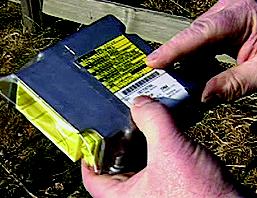By Gary Biller, NMA President
It is about “what” and “who.”
The question of “why” has been answered consistently over the past 30 years by Jim Baxter and a core of committed advocates. Without the dedicated drivers’ rights organization that is the National Motorists Association, we would still be puttering along on our highways at 55 mph rather than the more reasonable (and safer) speed limits of today.
Similarly, automated ticketing schemes, inflated tolls and surcharges, and the bypassing of defendants’ rights in traffic court would be even more common place without the NMA actively representing motorists everywhere.
Jim Baxter retired earlier this month as the only president the NMA has ever known. It is daunting and challenging to follow in his footsteps. Before I get back to the “what” and the “who” of the NMA’s future, I would be remiss not to point out a wonderful discussion of Jim’s leadership and career transition by our friends at OOIDA (Owner-Operator Independent Drivers Association).
“What” are the NMA’s core issues? Some are illustrated by the thumbnail summaries below.
 Speed Limits
Speed LimitsSpeed limits should be based on sound traffic-engineering principles that consider motorists’ reasonable and prudent travel speeds.
 Lane Courtesy (Keep Right)
Lane Courtesy (Keep Right)This is the simple but crucial principle of requiring slower traffic to use the right lane, and for vehicles in the left lane to yield to faster traffic.
 Event Data Recorders (Black Boxes)
Event Data Recorders (Black Boxes)The NMA opposes the collection of black box data against the will of vehicle owners. Fewer than one fourth of all states have laws regulating the use of black boxes or defining the ownership of their contents.
 Automated Ticketing (Photo Enforcement)
Automated Ticketing (Photo Enforcement)The NMA opposes the use of ticket cameras and proposes engineering solutions as the real fix for intersections with high accident rates.
 Speed Traps
Speed TrapsThe NMA opposes the use of enforcement tactics that are intended to generate revenue from technical violations of underposted speed limits.
 Distracted Driving
Distracted DrivingDistracted driving is best addressed through efforts to educate its dangers. Passing new specific behaviors is a classic slippery slope, particularly when states already have laws that cover distracted driving.
As time and technology march on, intrusions into our personal lives, at home and on the road, are increasing. Mobile scanners capture license plate details and feed that information into a bevy of databases, looking for wrongdoers at literally every turn. The use of roadblocks is also on the rise, from sobriety checks to identification stops to motorcycle “safety” checkpoints. These are all forms of casting a wide “guilty until proven innocent” net. The NMA will be at the forefront of public debate, fighting to establish policy in accordance with constitutional rights.
The “who” of the NMA’s future is less certain. Only a tiny sliver of the 220 million or so licensed drivers in the United States and Canada realize the vital role the NMA has played in shaping the current driving environment. Our challenge is to engage a larger segment of the motoring public, and I will be dedicating much of my time toward this effort. The effectiveness of the NMA is in direct proportion to the resources it can bring to bear, be that the legislative power of a larger membership, or the financial leverage of a greater base of supporters to influence opinions and events.
I will echo some parting words that Jim Baxter shared recently with supporting members of the NMA: “I have never believed more strongly than I do today that there is a tremendous need for a strong and dynamic National Motorists Association. What we do, or don’t do, affects virtually millions of people. There has never been a more important time, or a greater need, to step up to the plate and support this organization.”






